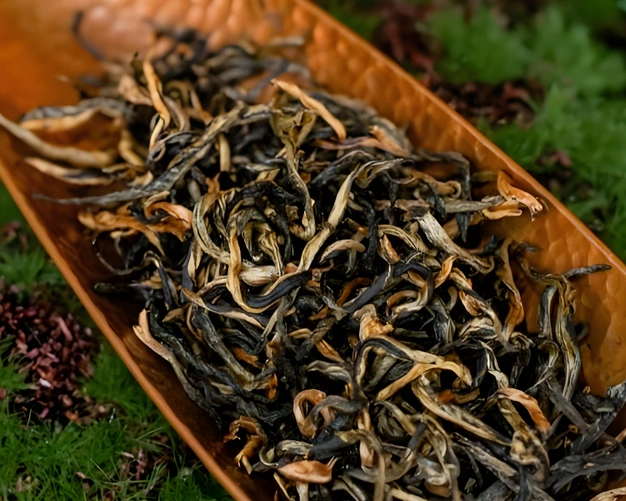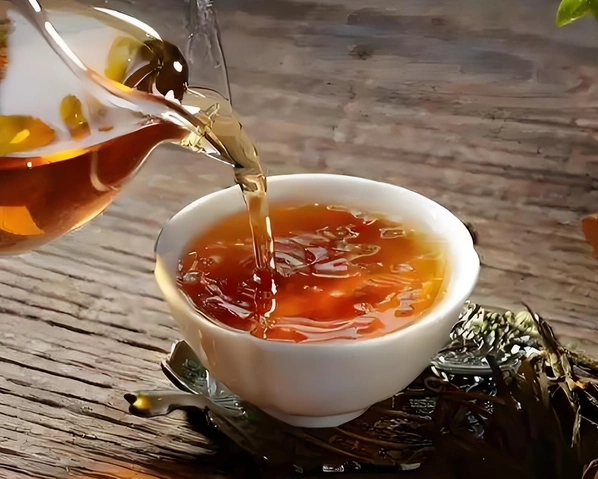Black tea in Chinese culture is far more than a beverage—it’s a living thread that weaves together history, ritual, wellness, and community. Originating in China’s misty highlands, black tea has traveled ancient trade routes, fueled imperial ceremonies, and today thrives in bustling tea houses and online marketplaces alike. Each amber cup carries whispers of withering leaves, careful oxidation, and fragrant firing—processes perfected over centuries.
In this article, we’ll journey through black tea in Chinese culture, exploring its storied legacy, traditional processing methods, ritual roles, health‑boosting traditions like black tea for stress relief, culinary pairings, and its vibrant modern resurgence. Get ready to awaken your senses and deepen your appreciation for this timeless elixir.
The Legacy of Black Tea in Chinese Culture
From Ancient Dynasties to Modern Times
Black tea’s story begins in the Tang Dynasty (618–907 AD), when tea was first prized as a medicinal herb. By the Ming and Qing dynasties, full oxidation techniques emerged in Fujian and Anhui provinces. Legends speak of local farmers accidentally over‑fermenting green tea leaves and discovering the rich, malty flavors that would become Keemun and Lapsang Souchong. These creations captivated European traders in the 17th century, who dubbed it “black tea,” launching a global phenomenon.
Regional Varieties and Tea Routes
Fujian’s Wuyi Mountains gave birth to rock‑grown Da Hong Pao, while Keemun in Qimen County produced a delicate, wine‑like brew. Yunnan’s Pu’er-shared terroir spawned bold Dianhong. These teas traveled along the Tea Horse Road and Maritime Silk Routes, fostering cross‑cultural exchange. Today, each region still stamps its unique fingerprint on leaf and cup.

Traditional Processing Methods
Withering, Rolling, and Oxidation
Artisans begin with freshly plucked leaves, laid to wither until pliable. Rolling breaks cell walls, releasing enzymes that trigger oxidation—the magic step that turns green leaf to crimson liquor. Masters monitor humidity and temperature, ensuring the ideal 80–100% oxidation that yields black tea traditional processing depth and sweetness.
Firing and Aging Techniques
Post‑oxidation, leaves are fired to halt enzymatic activity and carve flavor. Light roast preserves floral notes; heavy roast adds smoky drama. Some teas, like aged Yunnan, rest for months—developing mellow, honeyed complexity. This traditional processing honors both craft and terroir.
Black Tea’s Role in Chinese Rituals
Tea Ceremonies and Hospitality
In southern China, offering tea to guests is a gesture of respect. The gongfu tea ceremony elevates this into art: small Yixing pots, precise water temperatures, and multiple short steeps allow guests to savor evolving aromas. Even modern households pause work to share this black tea in Chinese culture moment of connection.
Black Tea for Holiday Gifts
During Chinese New Year or Mid‑Autumn Festival, exquisite tins of Keemun or Tie Guan Yin present both luxury and luck. Known as black tea for holiday gifts, these selections symbolize health and prosperity—gifts that honor tradition and strengthen bonds.
Health and Wellness Traditions
Black Tea for Stress Relief
Traditional Chinese medicine values black tea’s warming Qi, believed to calm the mind. Modern research supports this: L‑theanine, an amino acid in black tea, promotes alpha waves, reducing anxiety Unno2018. A midday cup can soothe tension, making black tea for stress relief a gentle, natural antidote to modern pressures.
Black Tea for Study Focus
Scholars historically turned to tea’s subtle clarity during long study sessions. The balanced caffeine–L‑theanine synergy improves alertness without the jitters of coffee Bryan2008. Today’s students harness black tea for study focus, pairing tea breaks with mindful breathing to sustain concentration.

Cultural Pairings and Culinary Uses
Classic Chinese Snacks
Black tea’s maltiness pairs beautifully with dim sum staples—steamed buns, shrimp dumplings, or egg tarts. The tannins cut through richness, cleansing the palate between bites. At Cantonese yum cha, tea and snacks form a harmonious duet.
Fusion and Modern Recipes
Chefs infuse black tea into broths, desserts, and cocktails. Try black tea-infused macarons, smoked tea‑brined chicken, or tea‑smoked duck. These creative uses honor tradition while appealing to global palates.
Black Tea in Contemporary China
Tea Houses and Urban Culture
From Shanghai’s sleek tea lounges to Beijing’s retro‑chic tea bars, urbanites embrace both classic and flavored black teas. Instagrammable teahouses offer sensory experiences—scented steam, lyrical brewing rituals, and artisanal snacks—bridging ancient practice and modern lifestyle.
E‑Commerce and Gift Culture
Online platforms flood with curated tea assortments. Premium black teas, complete with sourcing stories and brew guides, make black tea for holiday gifts more accessible than ever. Subscription boxes deliver monthly delights—ensuring everyone can partake in China’s tea heritage.
Embracing White Tea for Balance (Optional)
White Tea’s Subtle Contrast
While black tea thrills with depth, white tea’s gentle catechins (e.g., Bai Mudan) offer a delicate counterpoint—light florals and a whisper of sweetness. Blending small amounts with bold black leaf softens astringency and enhances complexity.
Blending Suggestions
Try a 4:1 ratio of black to white tea, steeping at 90 °C for 3 minutes. This optional fusion invites both power and poise into your cup—a modern twist on Chinese tea artistry.

Conclusion
Key Takeaways on Black Tea in Chinese Culture
Black tea’s journey—from imperial gardens to bustling metropolises—embodies resilience and innovation. Its traditional processing crafts layers of flavor; its social rituals foster connection; its wellness virtues soothe stress and sharpen focus.
Next Steps: Exploring Your Tea Journey
Begin with a classic Keemun or Yunnan Dianhong—note aromas, flavors, and aftertaste. Attend a gongfu tea ceremony or host your own tasting. Blend in white tea for a nuanced edge. Whether you seek black tea for stress relief, study focus, or holiday gifts, allow each cup to deepen your bond with China’s living tea legacy.
Raise your cup to centuries of craftsmanship—and to the many stories waiting in each leaf.



